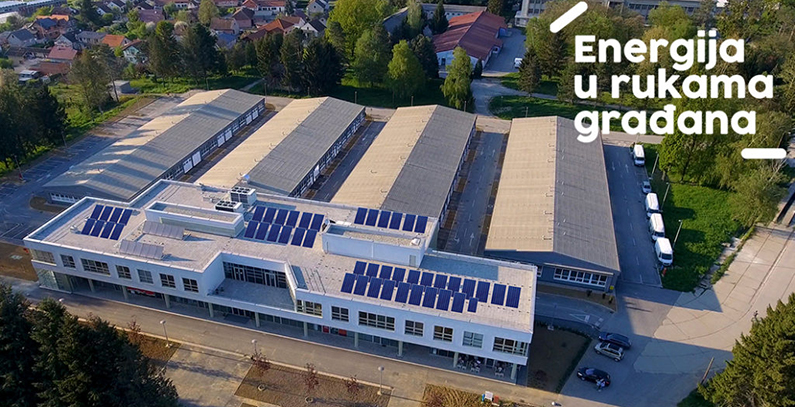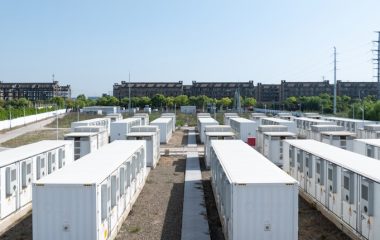
Photo: Pixabay
Energy transition has long become a reality all over the world, and this region is no exception. However, in this part of the world, the necessity to produce energy from renewable sources instead of fossil fuels, as well as the possibility for each of us to produce green energy for own consumption, is very often something that is only talked about rather acted upon. The examples of four cities and one island in Croatia show what it looks like when people act on their words.
Križevci – Energy democratization at work

In the city of Križevci, some 60 kilometers east of the capital Zagreb, Green Energy Cooperative (Zelena Energetska Zadruga (ZEZ)) is leading a crowdfunding project called Križevački sunčani krovovi, with the aim of providing citizens with an opportunity to invest in renewables, in particular in solar. The project is implemented in cooperation with the city authorities.
First green power plants financed by citizens in Croatia
Two campaigns have been successfully carried out so far, in May 2018 and in March 2019, with about EUR 50,000 raised for the installation of two solar power plants with a total capacity of 60 kW. These are the first two green power plants financed by citizens in Croatia. This model is widely implemented in the EU and it represents the introduction of energy democracy.
Energy cooperative KLIK established
Another energy cooperative, called KLIK (Križevci Climate Innovation Laboratory), was founded in 2020 to help make Križevci an energy self-sufficient city, but above all to engage citizens in energy transition. According to KLIK, it is estimated that by 2050, one in two EU citizens will become a prosumer, a person who both produces and consumes energy.
Karlovac: Energy and climate planning is becoming part of urban planning
In May this year, Karlovac adopted a Sustainable Energy and Climate Action Plan (SECAP), which was developed by the North-West Croatia Regional Energy Agency (REGEA).
Karlovac is set to become the first Croatian city to integrate energy and climate planning into its master plan
In order to create conditions for carrying out the measures from the action plan, the city, located some 50 kilometers southwest of Zagreb, has recently initiated changes to its master plan. REGEA will be tasked with preparing guidelines for integrating the action plan into the master plan, making Karlovac the first city in Croatia to do so.
The guidelines will mark the beginning of the implementation of measure 3 from the SECAP, which envisages the introduction of integrated energy and climate planning. This concept entails spatial and urban-energy analysis and a proposal of the city’s energy and climate concept.
The new method of planning will open the entire city area to sustainable energy use
According to Mayor Damir Mandić, this basically means that the master plan will define the entire Karlovac area in a way that will make it open to sustainable energy use and renewable energy sources as well as enable the city’s districts to adapt to climate change, Poslovni.hr has reported.
Zadar: CO2 emissions cut by 19%

The City of Zadar has announced that it reduced carbon dioxide (CO2) emissions by 19% from 2010 to 2017, nearly meeting the EU’s target of 20% by 2020. The city authorities have said that the result will be even better when data for the past three years are taken into account, noting that the biggest reduction, of 20.1%, was achieved in the transportation sector, followed by the construction sector, with 18.6%.
The biggest emission cuts were achieved in transportation and construction
The foundation for such an outstanding performance was laid in 2012, when the City of Zadar signed the Covenant of Mayors for Climate and Energy, committing to work on green growth and CO2 emissions reduction.
In the following years, the city adopted a Sustainable Energy Action Plan (SEAP), a program to combat climate change, and a plan for introducing e-mobility, and it is currently working on a Sustainable Urban Mobility Plan (SUMP).
Zadar has introduced an IT system for energy management
The city is co-financing the energy renovation of houses and buildings, as well as investment in renewable energy sources, and it has also implemented a number of projects such as introducing an IT system for energy management, replacing fuel oil with natural gas in heating boilers, installing LED lighting…
Krk: An island with zero CO2 emissions by 2040
The Secretariat of the Clean Energy for European Islands Initiative has recently recognized Krk as one of the ten best examples of good practice in energy transition. In 2012, according to the Secretariat, Krk published its decarbonization strategy titled “Krk 0% CO2 emissions” with the aim of becoming the first CO2-neutral and energy self-sufficient island in the Mediterranean by 2040.
Krk is home to Croatia’s first energy cooperative – Otok Krk
Also in 2012, Croatia’s first energy cooperative was founded on island. The Otok Krk cooperative provides assistance and support to residents interested in producing green energy – from advice on choosing the optimal equipment to assistance with selecting contractors and obtaining permits to investing in larger projects and taking part in managing the cooperative itself.
Krk has implemented LED technology in public lighting, cutting electricity consumption from 1.02 million kWh in 2010 to 734,864 kWh in 2018. Given that 53% of CO2 emissions come from transportation, the island has deployed 12 charging stations for electric vehicles (EVs), which can service 24 EVs at a time, as well as eight chargers for e-bicycles, which are part of a bicycle-sharing system.
The island has also founded two firms to manage the energy transition: Ostrvo Krk Energy and Smart Island Krk
The island has recently founded two firms to manage the energy transition: Ostrvo Krk Energy, which will coordinate the energy transition process, and Smart Island Krk, which will focus on smart processes and the digitalization of activities on the island. Ostrvo Krk Energy has developed a solar power plant with an installed capacity of 5 MW and offered local residents and businesses to become co-owners. The solar panels were installed on about 10 public buildings.
The zero CO2 emissions strategy, which was updated in 2018, envisages the installation of rooftop photovoltaic (PV) panels with a total capacity of 36.8 MW in the next 20 years, along with 4 MW of ground-mounted solar power plants, 25.2 MW of wind farms, and 250 kW of biogas power plants. This should result in investments totaling EUR 89.6 million.
Koprivnica: The green Koprivnica initiative

With the recent installation of 750 solar panels on the roof of the city swimming pool, the city, which is located about 50 kilometers east of Varaždin, continued to implement its initiative for a green Koprivnica. As part of the initiative, the city has so far purchased electric and hybrid vehicles for the local administration, as well as smart benches, and built recycling yard Herešin, composting plant Herešin, and ecological gardens.
The investment in rooftop solar panels will pay off in five years
The 765 solar panels will be able to generate about 180,000 kWh of electricity a year. The investment totaled some EUR 99,500, and is expected to pay off in less than five years.
Koprivnica’s sustainable urban mobility plan has helped increase walking and cycling
In cooperation with the Regional Energy Agency North (REA) the city has developed a map of Koprivnica’s solar energy potential, which enables citizens to assess whether an investment in solar energy would pay off. The City of Koprivnica is also offering to prepare complete project documentation and select the best solution for each individual roof for residents who decide to invest in solar energy.
In 2015, Koprivnica adopted a sustainable urban mobility plan. One of the first benefits of the plan was an increased share of walking and cycling in the city.









Be the first one to comment on this article.